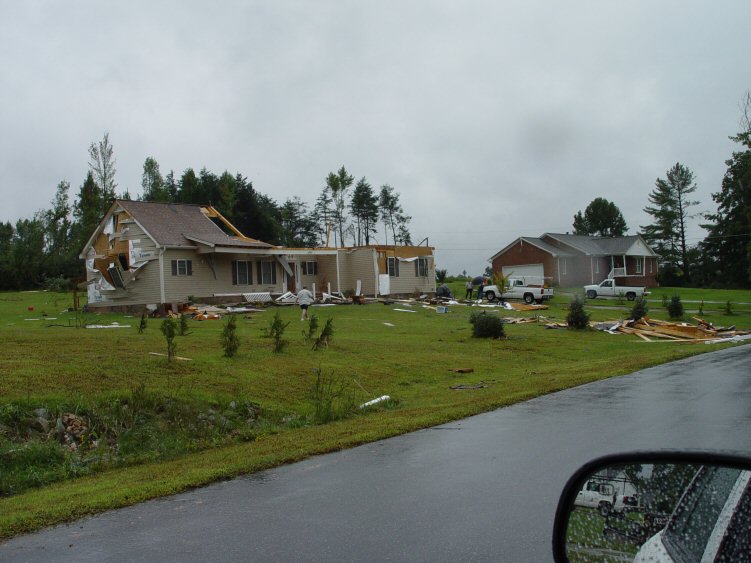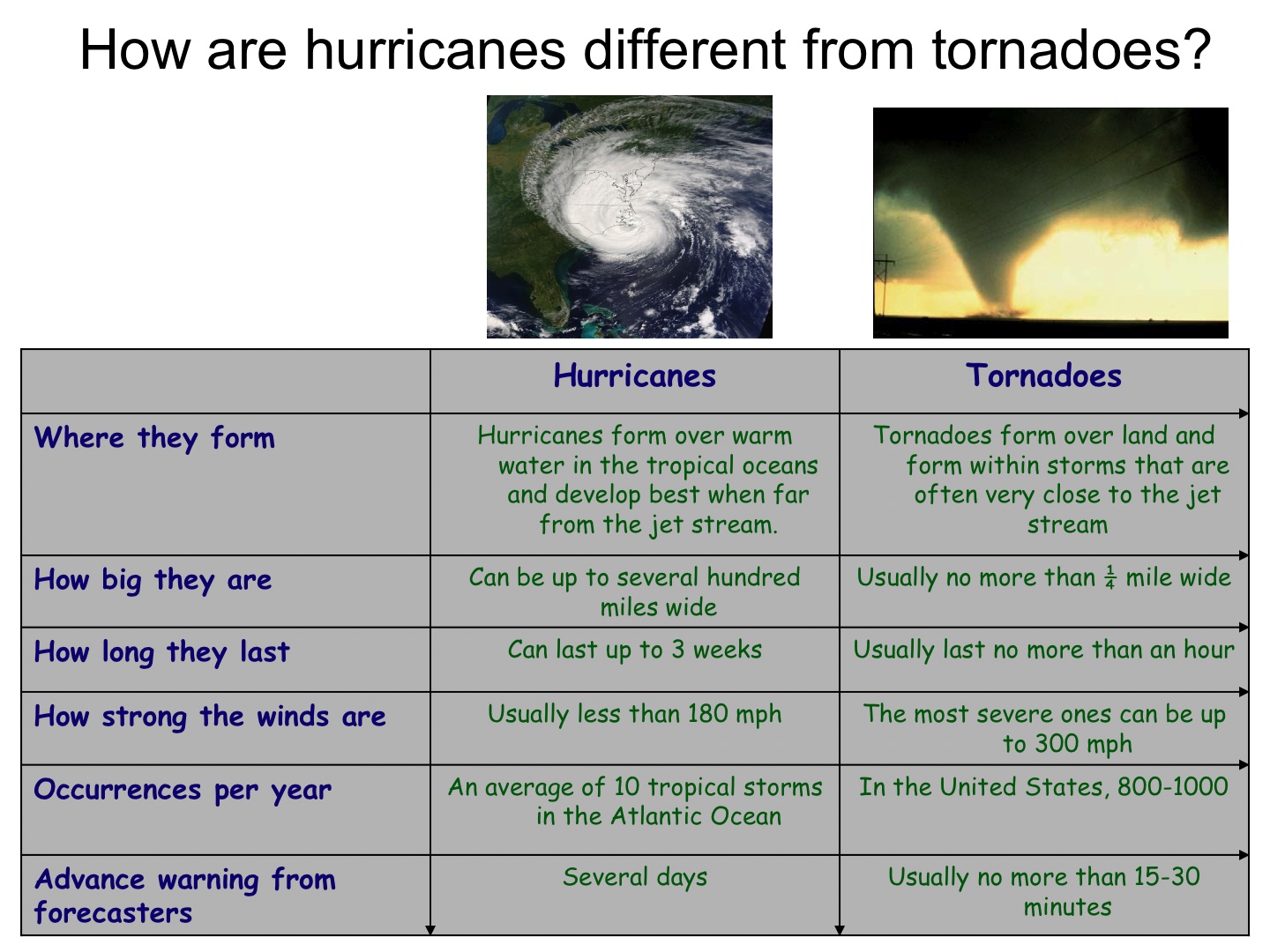 |
Tornadoes |
 |
A tornado is a violently rotating column of air that extends from the bottom of a cumuliform cloud, such as a thunderstorm, to the ground. Tornadoes are often (but not always) visible as a funnel cloud. It is important to never confuse a tornado with a hurricane or other tropical cyclone because tornadoes and hurricanes are very different phenomena. Perhaps the only similarity between tornadoes and hurricanes is that they both contain strong rotating winds that can cause damage.
There are many differences between tornadoes and hurricanes. The largest tornado every observed was 4 km (2.5 mi) wide, and most tornadoes are < 0.8 km (0.5 mi) wide. The parent storm clouds that produce tornadoes are generally about 16 km (10 mi) wide. Hurricanes, however, are typically much larger, ranging from about 160 km (100) mi to 1600 km (1000 mi) wide (see Hurricane Structure and Primary Circulation). A tornado’s lifetime is short, ranging from a few seconds to a few hours. By contrast, a hurricane’s lifecycle can last from days to weeks. Tornadoes, and the parent storm clouds that produce them, require strong vertical wind shear and strong horizontal temperature changes to form and survive; hurricanes thrive in regions of weak vertical wind shear where the horizontal change in atmospheric temperature is small (see Hurricane Genesis: Birth of Hurricane). Also, strong tornadoes usually occur over land, while hurricanes almost always form over the ocean. Finally, the strongest tornadoes can have wind speeds over 483 kph (300 mph), but even the strongest hurricanes rarely produce wind speeds over 322 kph (200 mph).
Individual storm clouds within hurricanes may spawn tornadoes as a hurricane makes landfall, with tornado production continuing, in some instances, for several days after landfall. Tornadoes are most likely to occur in a particular quadrant of a hurricane. Some research suggests that the preferred quadrant is the right-front quadrant relative to a hurricane’s direction of propagation, but other research suggests that the northeast quadrant is preferred for tornado production regardless of the hurricane’s propagation direction. Regardless, tornadoes typically form in the part of a hurricane where the vertical wind shear is largest. If a hurricane interacts with a front or it ingests air that is unstable, tornado production will become more favorable in those regions of the hurricane. Tornadoes typically form in the spiral rainbands of a hurricane, but tornadoes have also been observed in the eyewall. Some hurricanes may produce no tornadoes, while others develop several. In general, tornadoes associated with hurricanes are relatively weak and short lived, especially in comparison to those that occur over the Great Plains of the United States. Nonetheless, the effects of tornadoes, added to the effects of hurricane-force winds, can produce substantial damage.
 Hurricane Ivan (2004) caused a multi-day outbreak of 127 tornadoes (in 9 different states), with the bulk of the tornadoes on 17 September in the mid-Atlantic region, some two days after Ivan's landfall in Alabama. At least 7 people were killed and 17 injured by these tornadoes. Damage shown here is from the Stokesdale, NC, tornado that was produced during the passage of the remnants of Hurricane Ivan on Friday, September 17, 2004. Photo credit: NOAA/NWS. |
|
Additional Links on HSS
|
 |



